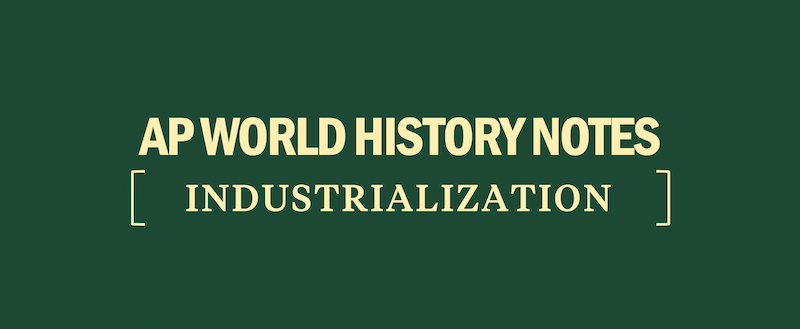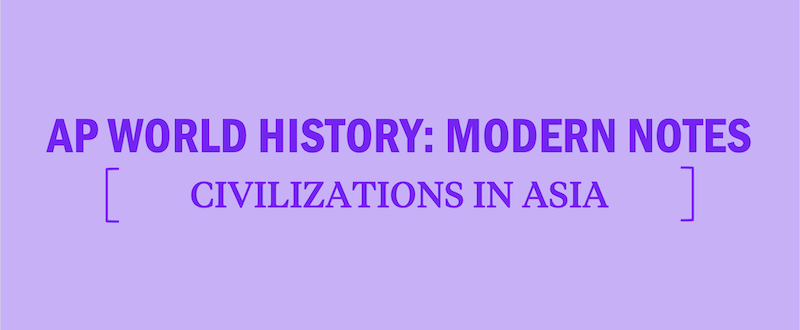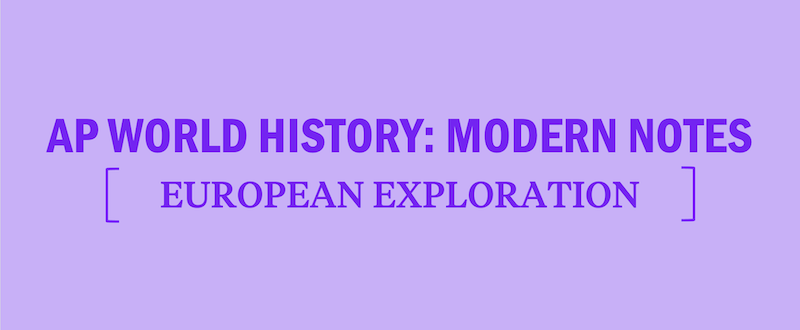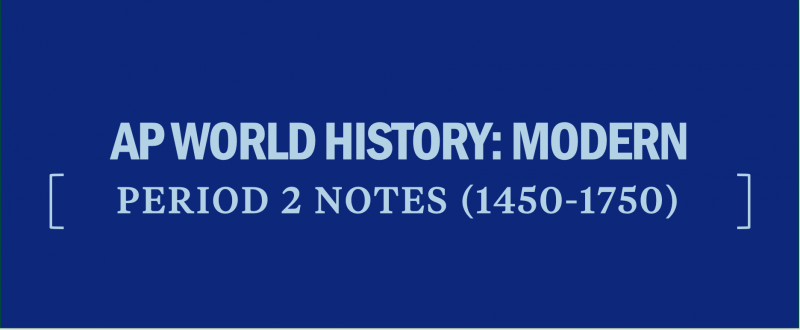Industrialization — AP World History: Modern Notes
The Industrial Revolution took place in the mid-18th to early 19th century. Industrialization changed the world drastically, and was the forerunner to many significant world events. Read on to learn more about the precursors to and aftereffects of industrialization.
Table of Contents:
- What is Industrialization?
- Preconditions for Industrialization
- Effects of Industrialization
- Political and Philosophical Reactions to Industrialization
Industrialization Definition—What is Industrialization?
Industrialization is the process of a society’s transition away from agrarianism and towards industry and manufacturing. Scientific discoveries and technological advancements led to the rise of modern industry in the eighteenth and nineteenth centuries. The following factors made rapid industrialization possible:
- Increased agricultural production, to support a large workforce
- Possession of natural resources like coal and iron ore
- Investment capital (money) to build factories
- A stable government that protected private property
- Technical knowledge and communication of discoveries
- Control of sea ports, rivers, and canals
The Industrial Revolution would affect human labor, consumption, family structure, and much more. The following lists outline some major economic and social changes that occurred in industrialized nations and their global impact.
Domestic Impact of the Industrial Revolution
- Growth of urban centers
- Creation of middle class of merchants and factory owners
- Unsafe, harsh conditions in factories
- Loss of traditional artisan guilds
- Rising standard of living
Global Impacts of the Industrial Revolution
- Widened gap between industrial and nonindustrial nations
- Competition for colonial territory to secure natural resources
- Greater economic power in Europe
- The Revolutions of 1848
- World trade increased
Preconditions for Industrialization
England was the first modern industrial economy for several reasons. England’s geographical position in the Atlantic Ocean gave it access to raw materials from around the globe as well as sea access to markets for its manufactured goods. It also had plentiful natural resources, such as rivers, coal, and iron ore; these provided energy to power factories and other manufacturing. Additionally, England’s growing population surpassed the amount of labor needed for agricultural production, thus providing surplus workers for industrial jobs. Finally, England had a business class that had grown wealthy through commerce, especially from the transatlantic slave trade; these people were able to reinvest profits into industry.
Other nations were close behind England in developing industrial capability. The United States and Germany both surpassed England in steel production by 1900, while Russia, Japan, and the Ottoman Empire followed behind. Spain and the rest of continental Europe were largely excluded from industrialization during this period.
Industrialization Precursors: An Agricultural Revolution
Though it is counterintuitive, the Industrial Revolution was partially made possible by agricultural advances. The Dutch began this process by erecting earthen walls to reclaim land from the sea and using fertilizer from livestock to renew soil nutrients. In the 1700s, British farmers began experimenting with crop rotation, and Jethro Tull invented a mechanical seed drill that sped up the planting process. Farmers began to share their knowledge and techniques through farm journals. This resulted in higher agricultural output, which in turn created the population growth so key to maintaining an industrial labor force.
Industrialization Precursors: Technology
Technological development was the driving force of industrialization. For example, hydropower was used to make mills more efficient. A major advancement was the steam engine, which would become the foundation of this new mechanical age. Coal was vital in the production of iron, which was used to construct machinery and steam engines. New methods for producing iron resulted in a better product produced at lower costs. Iron was a vital material during the Industrial Revolution, especially in railroad construction. Cars, ships, and factories were both products and tools of further industrialization. A second industrial revolution in steel, chemicals, and electricity transformed society in the late nineteenth century. These advancements led to innovations in scientific fields such as engineering and medicine.
Effects of Industrialization
Effects of Industrialization: Environment
The Industrial Revolution had significant, long-lasting impacts on the environment. Air and water pollution affected the health of people living in the rapidly growing urban areas. Entire landscapes were destroyed as humans cut down timber for railroad ties, stripped hills and mountains for ores, and denuded areas of vegetative cover for farming. This increase in deforestation exacerbated desertification in some areas and flooding and mudslides in others. The invention of dynamite in 1867 opened the way to more effective removal of earth and stone, particularly for mines and tunnels. Mechanical methods of hunting made fishing and whaling more effective, with the result that many areas were significantly depleted even by the early twentieth century. Many whale species were in danger of becoming extinct until the discovery of petroleum products made whale oil less valuable. Improved firearms made hunting easier, often with disastrous results as animals like the bison of the North American plains were hunted almost to extinction.
It was also during this era, however, that concern for the environment, beyond the need to con- serve for a nation’s resources, first began to assert itself. Many nations formed forestry services, initially based on the French and then the American model. National parks and nature preserves were created to keep areas from being developed. Western curiosity and scientific observations began to note the interconnectedness of nature and man’s impact upon it. Scientific methods in medicine and chemistry led to cures and preventative measures like sanitation systems, soaps and disinfectants, and vaccinations for many of the diseases that have plagued mankind throughout the centuries.
Effects of Industrialization: Financial Institutions
New financial systems also developed to support the new industrial production. More complex corporate structures, stock markets, and insurance enabled businessmen to raise the capital they needed to begin or expand production as well as to protect their investments from loss.
Large businesses often had a global reach. Transnational corporations such as the United Fruit Company had operations that affected lives in North, Central, and South America. The ideals of laissez-faire capitalism that Adam Smith and others had proposed became the inspiration for these changes.
Effects of Industrialization: Impact on Gender, Family, and Social Structures
Industrialization greatly affected gender roles and families. It also radically altered the traditional social structures of the day. The family, which previously had been a self-sufficient economic unit, moved economic production outside the home. Working-class women and children entered the industrial workforce as low-paid factory laborers.
A sharp distinction now existed between family life and work life. The status of men increased because industrial work and the wage were considered more important than domestic work, which was largely performed by women. Middle-class values became distinct from those of the industrial working class, which were stereotyped as promiscuous, alcohol-abusing, and immoral. Middle-class women generally did not work outside the home, but instead were pressured to conform to the new models of behavior often referred to as the “cult of domesticity”—the glorification of women as the center of the well-kept home.
Effects of Industrialization: The Factory System
The Industrial Revolution led to the establishment of the factory system in which factories employed large numbers of workers and power-driven machines to mass-produce goods. In the late 1800s, manufacturers sought to increase productivity and profits by designing products with interchangeable parts: identical components that could be used in place of each other. This process simplified assembly, but also made factory work tedious and repetitive. Factory work was also dangerous and had a negative impact on the health of laborers, both from environmental factors such as dust and chemicals and from accidents with machinery.
Global Effects of Industrialization
As a result of industrialization, a new global division of labor emerged. Industrial societies needed raw materials from other lands, and there was a large demand for materials such as raw cotton from India and Egypt and rubber from Brazil and the Congo. Latin America, sub-Saharan Africa, South Asia, and Southeast Asia became dependent on exporting cash crop products to the industrialized nations, but established little or no industrialization themselves. Most of the profits from these cash crops went abroad, and wealth was concentrated among the owners and investors in corporations.
The dependency theory explains the unevenness in development as the result of control by industrial nations. In short, the industrialization of some areas was achieved at the expense of others. Cash crop and colonial economies reinforced dependency on American and European manufactured goods.
Consumer goods became more affordable and plentiful thanks to industrialization. Some basic necessities of life became cheaper, like fabric. Luxuries once available only to aristocrats began to become more available to the middle class.
Improvements in medicine, along with better diets resulting from more food production, led to a dramatic rise in population as well as to an increase in the average life expectancy. The Earth’s population in 1750 was 790 million. By 1900, the population had doubled. Urbanization increased even faster than population growth because new methods of transportation (most notably railroads and steamships) led to increases in both internal migration within countries and external migration.
Effects of Industrialization: Advances in Transportation and Communication
During the First Industrial Revolution (approximately 1760–1820), the development of the steam engine led to creation of steamships and steam-powered locomotives, which rapidly sped up transportation. The creation of canals enabled heavy loads to be transported long distances and linked previously separate waterways. The development of the telegraph revolutionized the speed at which businesses, people, and armies could communicate.
During the Second Industrial Revolution (1870–1914), the development of the internal combustion engine transformed how machines operated and initiated the rise of oil as a global commodity. It also saw the beginning of widespread electrification. Economic inequality within industrialized countries, spurred on by the growth of industries like steel and railroads, led to a sharp increase in socialist parties and unions.
Reactions to Industrialization
As the nineteenth century progressed, the Industrial Revolution redefined both society and the economy, stirring new tensions. Enlightenment ideas and sentiments inspired many political movements. Some were revolutionary, while others were reformist. Their impact would be global.
Reactions to Industrialization: Liberalism
One response to industrialization was the rise of liberalism, which resulted from the rapid growth of the middle class. With philosophical roots in the Enlightenment, liberals opposed monarchies and wanted written constitutions based on separation of powers. They were proponents of natural rights. Having greatly benefited from the new capitalist, industrial economy, liberals were staunch supporters of laissez-faire economic ideas. They were lukewarm to unionism and socialism.
Reactions to Industrialization: Socialism
The appalling conditions experienced by industrial workers in the 1800s inspired revolutionary reformers. Under the broad title of socialism, these movements critiqued capitalism and suggested instead an economy that was run by the proletariat, the equivalent of the modern-day working class. Socialists opposed the bourgeoisie, the class of businessmen and professionals that was becoming ascendant after the decline of the aristocracy.
The most notable expression of socialism in the nineteenth century was the Paris Commune, a revolutionary socialist government that ruled the city of Paris following the collapse of the French Empire in the Franco-Prussian War. It existed from March 18 to May 28 in 1871 and enacted a number of anticlerical and prolabor laws. The Paris Commune inspired many later leftist revolutionaries, like Lenin. It popularized the red flag as a left-wing symbol. The French Army overthrew the Commune, killing approximately 20,000 revolutionaries in the process of retaking Paris.
Reactions to Industrialization: Unionism
While often tarred as veiled socialism, unionism can be distinguished as reformist rather than revolutionary. The union movement wanted to improve the lives of workers within the constraints of the capitalist economy rather than seeking its overthrow. Unionists advocated the organization of workers so that they could negotiate with their employers for better wages and working conditions. Factory owners fought to stop workers from banding together, resulting in considerable bloodshed. Workers struggled to remain unified against violent oppression.
Reactions to Industrialization: Communism
Communism, a radical form of socialism, sought to create self-sufficient communities in which property was owned in common. One of the most prominent socialist thinkers was Karl Marx, who, along with Friedrich Engels, wrote The Communist Manifesto in 1848. Marx and Engels advocated the overthrow of the moneyed classes which would be followed by a “workers’ state.” Communism is notable for being an internationalist ideology. It saw workers as a unified class regardless of their outward nationality. Later, after the emergence in the twentieth century of communist states like the Soviet Union and the People’s Republic of China, communism came to be associated with central planning of the economy by the government.
Reactions to Industrialization: Anarchism
Anarchism arose as a revolutionary antiauthoritarian movement. The father of anarchism was the Frenchman Pierre-Joseph Proudhon, who coined the assertion that “property is theft” and defined anarchy as “the absence of a master, of a sovereign.” Anarchism sought to replace existing authority structures with decentralized, self-governing cooperatives that rejected hierarchies. Anarchists played a major role in the Paris Commune, and the Commune’s decentralized structure reflected that.
In the late nineteenth and early twentieth centuries, anarchists were responsible for a series of high-profile bombings and the assassination of various political leaders. These actions were termed the propaganda by the deed and were intended as catalysts for wider revolution.
Reactions to Industrialization: Romanticism
Romanticism was a philosophical reaction to both industrialization and the Enlightenment. It manifested itself in the arts, literature, music, and various intellectual outlets. Romanticism emphasized emotion over reason, and glorified individualism over the collective, especially in the form of heroic deeds. Nationalism was a key expression of romanticism. In the twentieth century, it provided a basis for fascism.
Reactions to Industrialization: Conservatism
Various strains of conservatism developed in response to industrialization and the French Revolution. In England, Edmund Burke favored private property and laissez-faire economics, yet felt that capitalism should serve the traditional social order. In Germany, Otto von Bismarck favored “revolutionary conservatism” where the traditional social hierarchy was strengthened by a welfare state, depriving leftist radicals of modest goals that might organize workers and facilitate revolution. In general, aristocrats saw industrialization and the rise of capitalism as a corrosive threat to their privileges and to the structure of traditional society.






